Effects of Wood Drying Temperatures on the Reduction in Mechanical Properties of Japanese Cedar (Cryptomeria japonica D. Don) Perpendicular to Grain
Abstract
:1. Introduction
2. Materials and Methods
2.1. Materials
2.2. Drying Conditions
2.3. Partial Compression Test
2.4. Bending Test
3. Results and Discussion
3.1. Effects of Drying Temperature on Partial Compressive Properties
3.2. Effects of Drying Temperature on Bending Stress
4. Conclusions
- Young’s modulus perpendicular to grain, yield stress, and compressive strength obtained by the partial compressive test were highest for wood dried at 20 °C. It was possible to explain that the reduction in mechanical properties found in the drying at 100 °C was due to the effects of excessive heating. On the other hand, the decreases in mechanical properties found in drying at lower temperatures are considered to result from other factors, such as occurrences of compressive residual stresses due to the progress of drying and the collapse of wood cell walls under inappropriate conditions.
- Comparisons of the strain energy of partial compression calculated at each strain level showed that the effects of drying temperature became apparent, especially in the plastic region during loading in the direction perpendicular to the wood fiber.
- Bending properties showed little influence of drying temperatures compared to the partial compressive properties. On the other hand, fractures of the wood dried at 100 °C were often found under the loading point, suggesting reduced resistance to shear forces.
Author Contributions
Funding
Data Availability Statement
Conflicts of Interest
References
- Shida, S.; Kawasaki, Y. Wood Science Series 7 Wood Drying I; Kaiseisha Press: Otsu, Japan, 2020; pp. 9–54. [Google Scholar]
- Keey, R.B.; Langrish, T.A.G.; Walker, J.C.F. Kiln-Drying of Lumber; Springer: Berlin, Germany, 2000; pp. 22–42. [Google Scholar]
- Shida, S.; Kawasaki, Y. Wood Science Series 7 Wood Drying II; Kaiseisha Press: Otsu, Japan, 2020; pp. 41–106. [Google Scholar]
- Toba, K.; Kanbayashi, T.; Murano, T. Effects of drying Temperatures on the occurrence of sticker stain in Japanese cedar (Cryptomeria japonica D. Don). For. Prod. J. 2021, 71, 209–215. [Google Scholar] [CrossRef]
- Murano, T.; Watanabe, K.; Fujimoto, N.; Matsumoto, H. The position and shape of internal checks in sugi (Cryptomeria japonica) boxed-heart square timber dried high-temperature. Mokuzai Gakkaishi 2023, 69, 23–29. [Google Scholar] [CrossRef]
- Fu, Z.Y.; Chen, J.X.; Zhang, Y.Y.; Xie, F.F.; Lu, Y. Review on wood deformation and cracking during moisture loss. Polymers 2023, 15, 3295. [Google Scholar] [CrossRef] [PubMed]
- Kato, S.; Wada, N.; Shiogai, K.; Tamaki, T.; Kagawa, T.; Toyosaki, R. Crack severity classification from timber cross-sectional images using convolutional neural network. Appl. Sci. 2023, 13, 1280. [Google Scholar] [CrossRef]
- Kollmann, F.F.P.; Côté, W.A. Principle of Wood Science and Technology. I. Solod Wood; Springer: New York, NY, USA, 1968; pp. 180–291. [Google Scholar]
- Engelund, E.T.; Thygesen, L.G.; Svensson, S.; Hill, C.A.S. A critical discussion of the physics of wood–water interactions. Wood Sci. Technol. 2013, 47, 141–161. [Google Scholar] [CrossRef]
- Esteves, B.M.; Pereira, M. Wood modification by heat treatment: A review. Bioresources 2009, 4, 370–404. [Google Scholar] [CrossRef]
- Oltean, L.; Teischinger, A.; Hansmann, C. Influence of temperature on cracking and mechanical properties of wood during wood drying—A review. Bioresources 2007, 2, 789–811. [Google Scholar] [CrossRef]
- Kuroda, N. Development of fundamental research on drying of boxed-heart square timber of sugi (Cryptomeria japonica). Mokuzai Gakkaishi 2007, 53, 243–253. [Google Scholar] [CrossRef]
- Elustondo, D.; Matan, N.; Langrish, T.; Pang, S. Advances in wood drying research and development. Dry. Technol. 2023, 41, 890–914. [Google Scholar] [CrossRef]
- Zhao, J.; Fu, Z.; Jia, X.; Cai, Y. Modeling conventional drying of wood: Inclusion of a moving evaporation interface. Dry. Technol. 2016, 34, 530–538. [Google Scholar] [CrossRef]
- Lamrani, B.; Bekkioui, N.; Simo-Tagne, M.; Ndukwu, M.C. Recent progress in solar wood drying: An updated review. Dry. Technol. 2023, 41, 605–627. [Google Scholar] [CrossRef]
- Broda, M.; Popescu, C.M.; Poszwa, K.; Roszyk, E. How thermal treatment afects the chemical composition and the physical, mechanical and swelling properties of Scots pine juvenile and mature wood. Wood Sci. Technol. 2024, 58, 1153–1180. [Google Scholar] [CrossRef]
- Mertz, M. Wood and Traditional Woodworking in Japan; Kaiseisha Press: Otsu, Japan, 2011; pp. 75–80. [Google Scholar]
- Society of Polymer Science. Materials and Moisture Handbook; Kyoritsu-Shuppan: Tokyo, Japan, 1968. [Google Scholar]
- Saito, S.; Shida, S. Equilibrium Moisture Content of Wood Estimated Using the Climate Data of Japan. Mokuzai Gakkaishi 2016, 62, 182–189. [Google Scholar] [CrossRef]
- JIS Z 2101–2009; Methods of Test for Woods. Japanese Standards Association: Tokyo, Japan, 2009.
- ISO 13061-6:2014; Physical and Mechanical Properties of Wood—Test Methods for Small Clear Wood Specimens. International Organization for Standardization: Geneva, Switzerland, 2014.
- Miura, N.; Yamamoto, N. On the yield curve of sand in a particle crushing region. Proc. Jpn. Soc. Civ. Eng. 1982, 1982, 83–90. [Google Scholar] [CrossRef]
- Miura, N.; Murata, H.; Yasufuku, N. Stress-strain characteristics of sand in a particle-crushing region. Soils Found. 1984, 24, 77–89. [Google Scholar] [CrossRef]
- Kawano, K.; Aoki, K.; Inayama, M. Study on the shape of the additional area on partial compression perpendicular to the grain of large section glued laminated timber. Wood Ind. 2023, 78, 176–182. [Google Scholar]
- Fukuhara, Y. On the deformation in compression perpendicular to the grain of wood. Bull. Univ. Tokyo For. 1965, 61, 103–197. [Google Scholar]
- Toba, K.; Nakai, T.; Kanbayashi, T.; Saito, H. Effects of cyclic drying and moistening on the mechanical and physical properties of wood. Eur. J. Wood Prod. 2022, 80, 1333–1341. [Google Scholar] [CrossRef]
- Japan Housing and Wood Technology Center. Manual for the Strength Test of Structural Wood. 2007. Available online: https://www.howtec.or.jp/files/libs/1828/201712121507021978.pdf (accessed on 5 February 2021).
- Okano, T.; Sobue, N. Wood Science Handbook; Asakura Publishing: Tokyo, Japan, 2006. [Google Scholar]
- McMillen, J.M. Drying stresses in Red Oak. For. Prod. J. 1955, 5, 71–76. [Google Scholar]
- Tokumoto, M.; Hokari, K.; Takeda, T.; Yasue, K.; Yoshida, T. Distributions of drying set in sugi and hinoki boxed-heart square timbers dried by the high-temperature setting method. J. Soc. Mater. Sci. Jpn. 2004, 53, 370–375. [Google Scholar] [CrossRef]
- Toba, K.; Kobayashi, I.; Yamamoto, H.; Kurita, S. Surface shrinking and swelling behavior of boxed-heart timber of sugi (Cryptomeria japonica) during drying using high temperature setting treatment. Wood Ind. 2018, 73, 550–554. [Google Scholar]
- Toba, K.; Nakai, T.; Murano, T. Temporal Changes in strain condition on all lateral surfaces during pretreatment before timber drying. Bioresources 2023, 18, 4450–4457. [Google Scholar] [CrossRef]


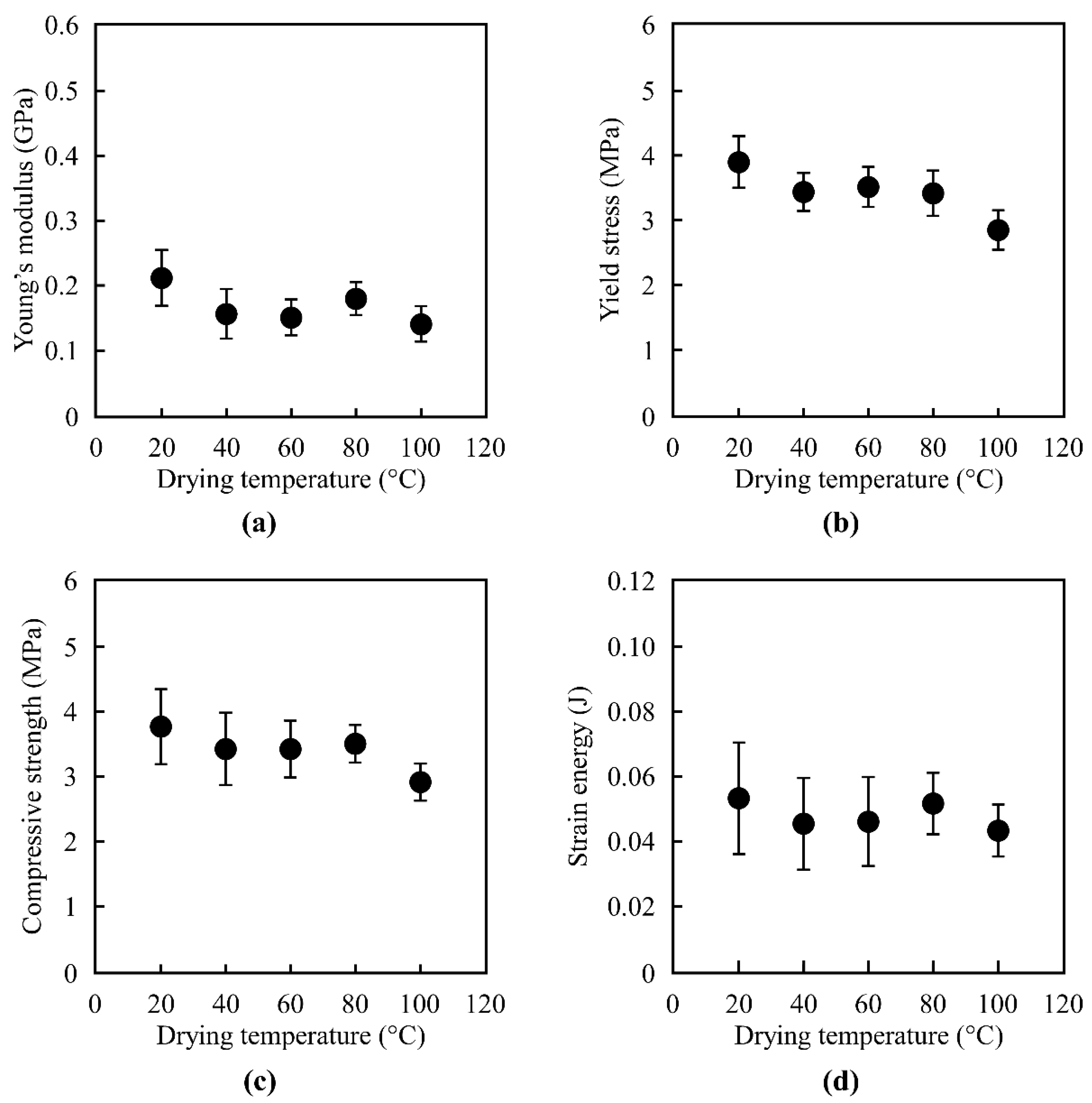

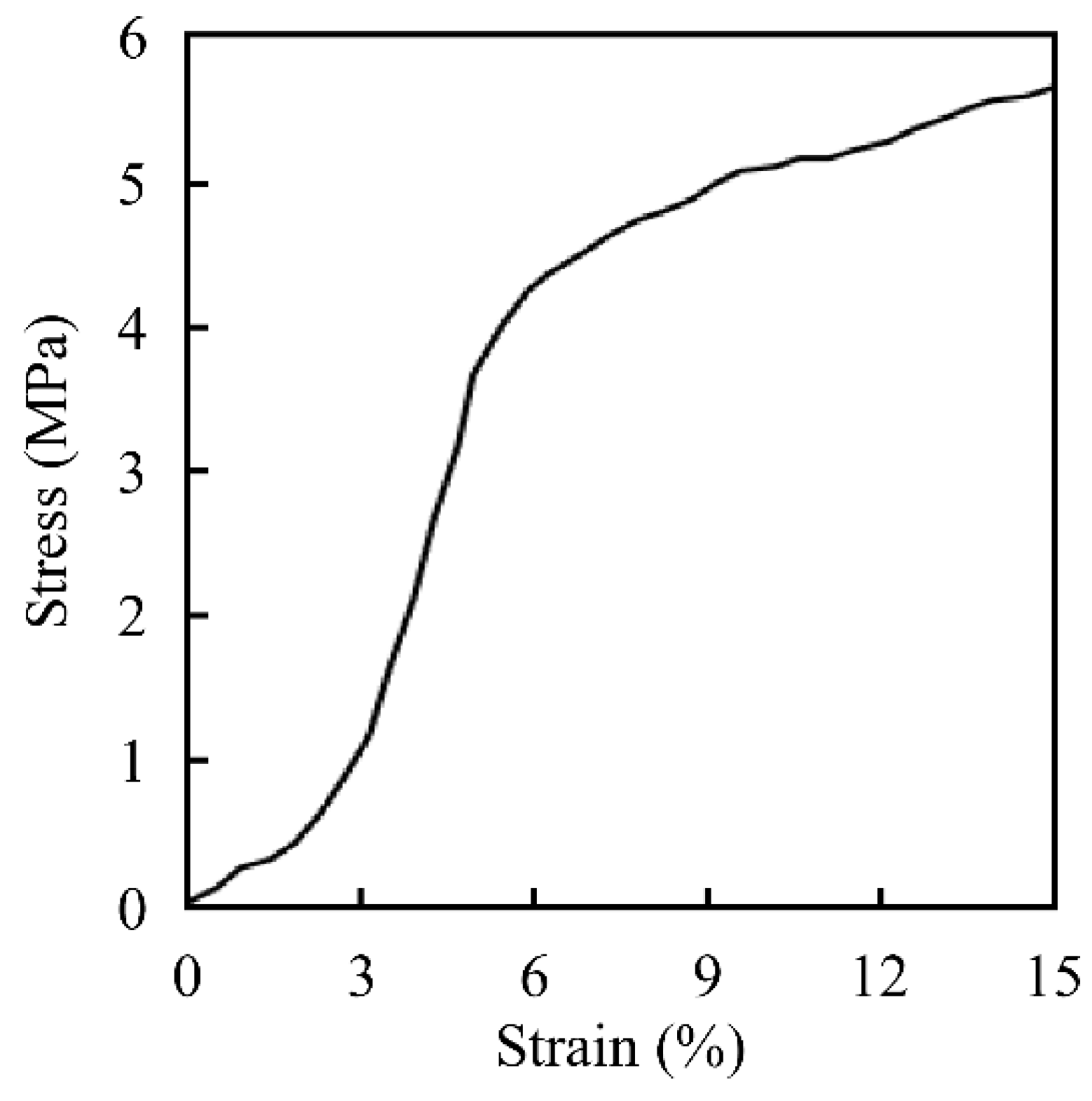
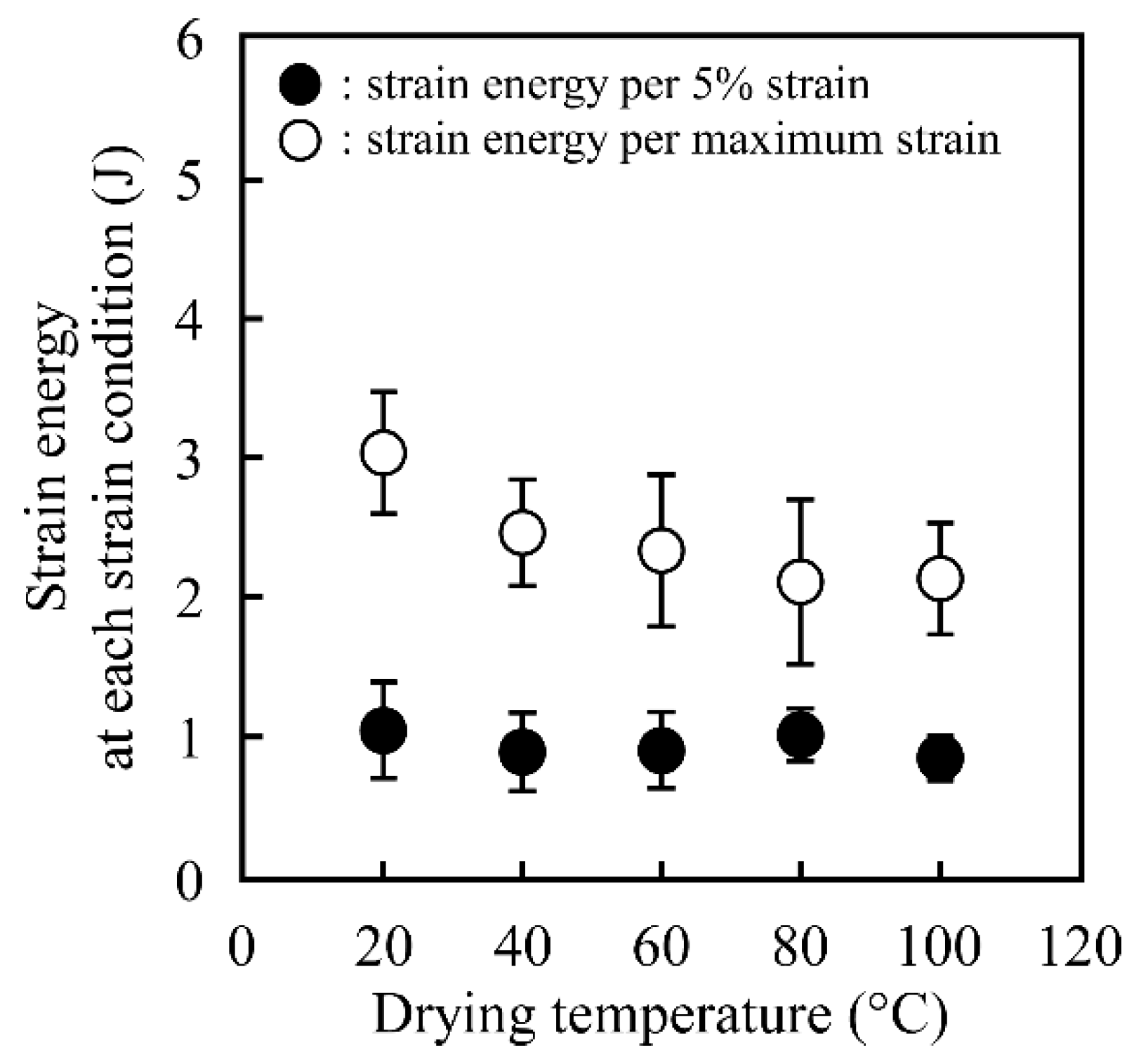
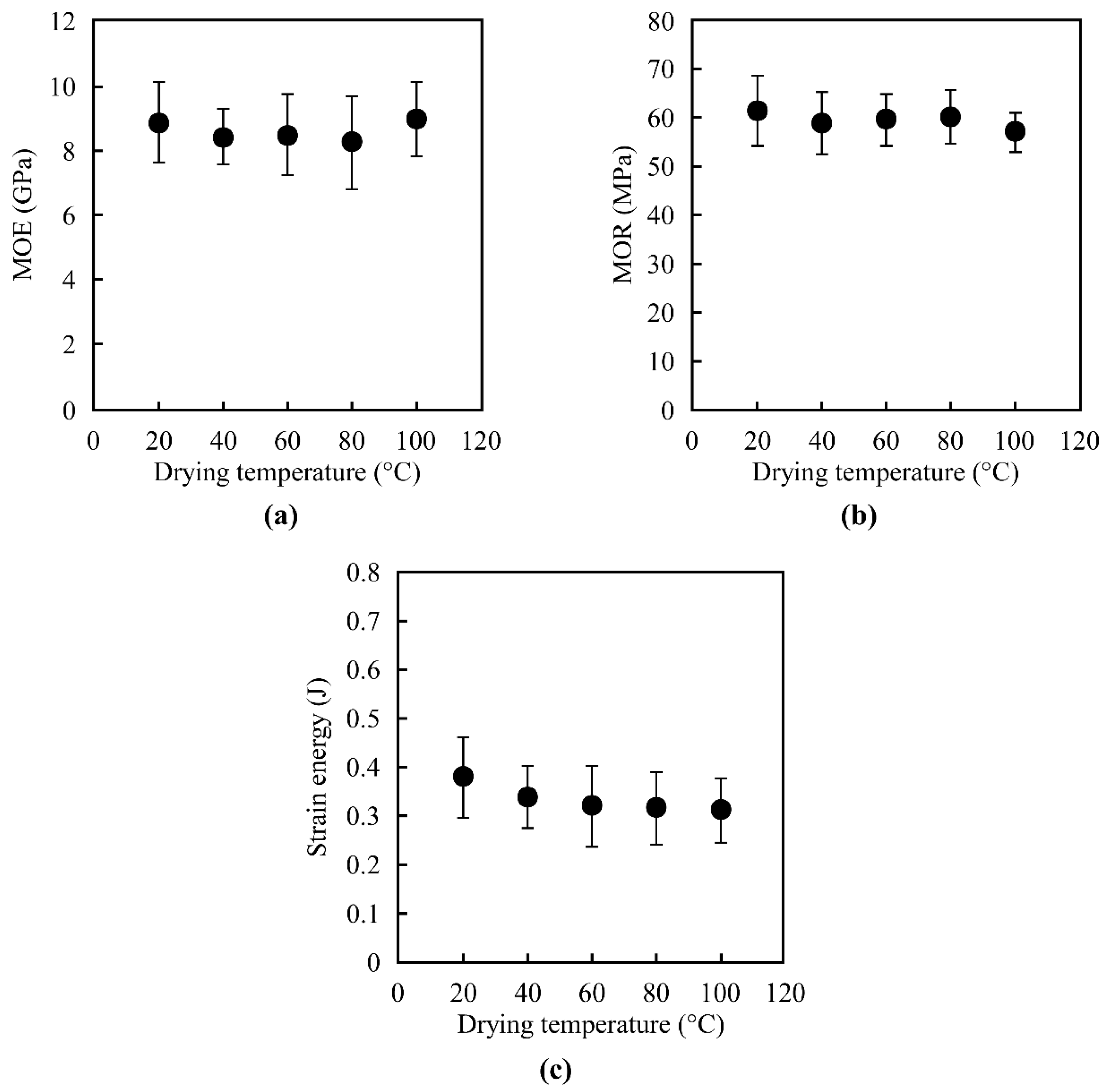
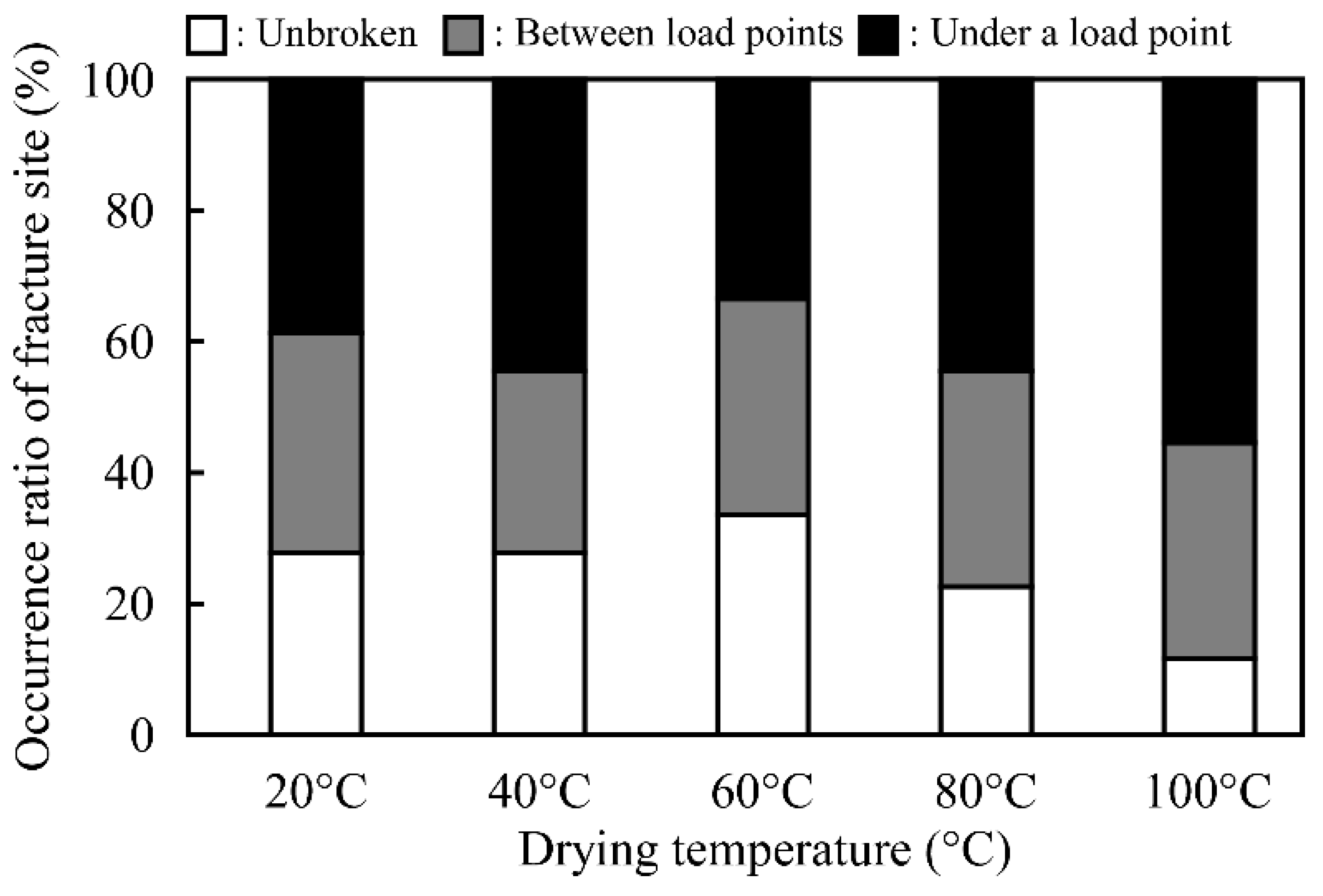
| Drying Temperature (°C) | Saturated Solution | Relative Humidity (%) | Drying Period (Days) |
|---|---|---|---|
| 20 | NaBr | 58 | 132 |
| 40 | KI | 67 | 52 |
| 60 | NaCl | 75 | 11 |
| 80 | KCl | 80 | 10 |
| 100 | Na2CO3 | 82 | 9 |
Disclaimer/Publisher’s Note: The statements, opinions and data contained in all publications are solely those of the individual author(s) and contributor(s) and not of MDPI and/or the editor(s). MDPI and/or the editor(s) disclaim responsibility for any injury to people or property resulting from any ideas, methods, instructions or products referred to in the content. |
© 2024 by the authors. Licensee MDPI, Basel, Switzerland. This article is an open access article distributed under the terms and conditions of the Creative Commons Attribution (CC BY) license (https://creativecommons.org/licenses/by/4.0/).
Share and Cite
Toba, K.; Nakai, T.; Saito, H. Effects of Wood Drying Temperatures on the Reduction in Mechanical Properties of Japanese Cedar (Cryptomeria japonica D. Don) Perpendicular to Grain. Buildings 2024, 14, 2624. https://doi.org/10.3390/buildings14092624
Toba K, Nakai T, Saito H. Effects of Wood Drying Temperatures on the Reduction in Mechanical Properties of Japanese Cedar (Cryptomeria japonica D. Don) Perpendicular to Grain. Buildings. 2024; 14(9):2624. https://doi.org/10.3390/buildings14092624
Chicago/Turabian StyleToba, Keisuke, Takahisa Nakai, and Hayato Saito. 2024. "Effects of Wood Drying Temperatures on the Reduction in Mechanical Properties of Japanese Cedar (Cryptomeria japonica D. Don) Perpendicular to Grain" Buildings 14, no. 9: 2624. https://doi.org/10.3390/buildings14092624





